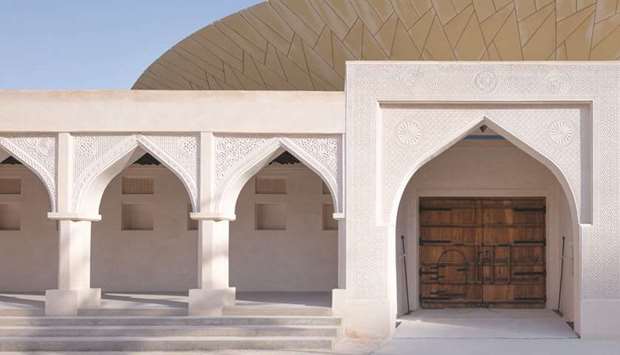The desert rose-inspired project, designed by Pritzker Prize-winning architect Jean Nouvel, is one of the most significant cultural projects in Qatar and also among the most ambitious museums projects of its kind, anywhere in the world, according to a statement by QM. Its construction started in 2011.
“The two temporary galleries (of the 14), which are quite large, will be used either for exhibitions that are locally done, in terms of the pieces (artefacts) that we have here, or in co-operation with any other entity that would like to come and have their exhibitions with us,” QM’s chief strategic planning office Khalid al-Ibrahim told reporters during a museum tour yesterday.
He noted that housing and exhibiting such collections, which usually run for weeks or months, come with informative, culture-oriented and educational workshops for students, children and families. All future activities at the museum will focus on serving the local community.
The museum is built around Sheikh Abdullah bin Jassim al-Thani’s original palace – his family home and seat of the government for 25 years, which has a unique historical significance for Qatar.
“The old palace, which is also the old museum, is still here, it is in the heart of this museum,” al-Ibrahim stressed. “As Qataris, we are proud of our past and are looking forward to our future.”
Archaeological objects in Qatar will also be displayed in the museum, he added.
“Also, it will be talking about our ancestors, what they have done, how they’ve lived and how we’ve evolved, and our connection to the sea and to the desert, all these stories will be told at the new National Museum of Qatar,” the senior QM official said. “It gives us a great voice to speak about our past and future as well.”
Part of the museum’s design is an open space between connecting galleries for motorists and passersby to view the old museum from the road.
“It is history with the future - all in one place,” al-Ibrahim noted.
The museum’s desert rose design provides visitors with a unique experience as they walk in and out of the building, according to QM.
“You need to feel it is a national museum, you need to feel like there are internal features that resemble the desert rose, and when you walk in you cannot forget this feeling, it is got to be continuous within - throughout the entry and the exit of the building,” al-Ibrahim said.
Further, he said all the internal aspects of the museum would be a “big surprise”, including the “most important and significant items”.
“Even the technology that will be used is probably unusual when you talk about a national museum, it will be among the best in the world,” he added.


